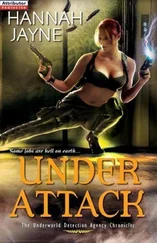On 9 September, ninety bombers reached the capital and dropped some of their load on the suburbs: Kingston, Richmond, Malden, Surbiton, Purley, but as the Daily Express put it, ‘Acacia Avenue clips its hedges beside a crater and carries on.’ The first of the many London hospitals that would be devastated by the blitz, Queen Mary, in West Ham, had been bombed on 7 September, killing two nurses and six patients. On the night of 9 September a bomb fell on the London Hospital in Whitechapel Road, and St Thomas’s Hospital on the Thames hard by Westminster Bridge, which had been designated as a wartime casualty clearing station, took a direct hit. Three floors of a nurses’ home on the north side collapsed, and two nurses and four masseuses were crushed to death under the falling masonry. One of the masseuses, thirty-two-year-old Barbara Mortimer Thomas from Australia, was covered in debris and trapped in her bed forty feet above ground by a steel girder, with only her head and shoulders visible, and the floor supporting her likely to collapse at any minute. Her cries alerted the rescue squad, who started the hazardous task of building a scaffolding tower among the dislodged masonry to reach her, and carefully cut a hole in the wall so that drinks and a hot-water bottle could be passed to her and morphine injected into her one free arm. Mortimer Thomas joked with her rescuers, but just as they were about to free her after sixteen hours, a doctor crawled through the wreckage and found that she had died. The hospital’s X-ray department was put out of action, and twenty-five patients were carefully carried to another ward. Seventy others were moved to other hospitals or sent home, while the entire staff repaired to the basement – a ‘most incredible sight – one could hardly move without stumbling over a sleeping form’.
The next day, since the water supply had failed, all the remaining patients – except one who had been brought in as an emergency appendicitis case that morning – were evacuated to sector hospitals in the country, * with medical students carrying the stretchers to waiting ambulances. St Thomas’s was hit again on 13 September and again on the 15th, when two surgeons and a nurse were killed and four were seriously injured, including one in charge of the first aid post who subsequently died. The outpatients ward, the dispensary and the hospital chapel were badly damaged, and the electricity supply was cut off, so doctors and nurses had to tend the patients by candlelight or using the few battery-powered nightlights available. The hospital was hit three more times during the blitz. It was, in the words of its historian, ‘for most of the war little more than a heap of ruins; yet it never closed entirely. When things were bad life was carried on in the basement … when things were better … a semblance of normal life and work miraculously took over in hastily cleared out rooms and wards.’
An air-raid shelter had been established in the basement of Buckingham Palace by appropriating one of the housekeeper’s rooms. The ceilings were reinforced with steel girders, the high window protected by steel shutters. The furniture came from all over the palace, while the decoration consisted of valuable Dutch landscapes, many featuring canal bridges and ruminant cows. An axe and an emergency escape ladder lay ready alongside a bottle of smelling salts. Members of the royal household sheltered in an adjacent room with a piano – but the King vetoed its use for rousing singsongs.
‘My darling Mama,’ Queen Elizabeth wrote to Queen Mary on Friday, 13 September, ‘I hardly know how to tell you of the horrible attack on Buckingham Palace this morning. Bertie & I arrived there about ¼ to 11, and he and I went up to our poor windowless rooms to collect a few odds and ends.’ As the Queen was removing an eyelash from the eye of the King they heard a plane, which caused them to remark, ‘Ah, a German,’ as a bomb screamed down. ‘I saw a great column of smoke & earth thrown up into the air. And then we all ducked like lightning into the corridor. There was another tremendous explosion, and we & our 2 pages who were outside the door, remained for a moment or two in the corridor away from the staircase, in case of flying glass. It is curious how one’s instincts work at these moments of great danger, as quite without thinking, the urge was to get away from the windows. Everybody remained wonderfully calm, and we went down to the shelter … I was so pleased with the behaviour of our servants. They were really magnificent.’ Three of those servants, working below in the chapel, were badly injured, and one subsequently died of his injuries.
That same afternoon, the royal couple toured the East End. ‘The damage there is ghastly,’ the Queen told her mother-in-law. ‘I really felt as if I was walking in a dead city … All the houses evacuated and yet through the broken windows one saw all the poor little possessions, photographs, beds, just as they were left. At the end of the street is a school [South Hallsville School] that was hit and collapsed on top of the 500 people waiting to be evacuated – about 200 are still under the ruins [as was believed locally]. It does affect me seeing this terrible and senseless destruction – I think that I mind it much more than being bombed myself. The people are marvellous and so full of fight. One could not imagine that life could become so terrible. We must win in the end …. PS Dear old BP is still standing and that is the main thing.’
Harold Nicolson, now working in the Ministry of Information, had been concerned that it would not play well with East Enders if, while they were suffering so grievously, ‘the toffs up West’ got off lightly. ‘There is much bitterness. It is said that even the King and Queen were booed the other day when they visited the destroyed areas … Clem[ent Davies, Liberal MP and post-war party leader] says that if the Germans had had the sense not to bomb west of London Bridge there might have been a revolution in this country.’ Fortunately (in this context) the Germans displayed remarkably little such sense, and had ‘smashed about Bond Street and Park Lane and readjusted the balance’ (somewhat) on 9 September. Four days later ‘an aircraft was seen coming down the Mall … having dived through the clouds and dropped two bombs in the forecourt, 2 in the quadrangle, 1 in the Chapel & the other in the garden. There is no doubt that it was a direct attack on the Palace.’
The attack allowed the press to caption a photograph of the Queen meeting one East Ender: ‘Two women whose home has been bombed chat about the experience’. And the King told his mother that in his view, the couple’s visits to bombed areas ‘helped people who have lost their relations & homes & we have found a new bond with them as Buckingham Palace has been bombed as well as their homes, and nobody is immune’
If nobody was immune – which indeed few were – at least the royals could dress the part for their important role as morale-boosters, as their siren-suited Prime Minister fulfilled that of warrior-leader. George VI chose a series of uniforms, ‘wearing in turn the dress of each of the high ranks he bore, as Admiral of the Fleet, a Field Marshal, and Marshal of the Royal Air Force, [making] no further public appearances in mufti [after the outbreak of war] he gave visible notice that he considered himself as continually on duty as any man in the fighting services’, in the words of an admiring booklet published after the war.
The Queen had the right to wear a number of uniforms, including those of the WRNS, the WAAF and the St John Ambulance Brigade, and by 1945 her elder daughter Princess Elizabeth was entitled to wear the uniform of the ATS (Auxiliary Territorial Service – the women’s branch of the army). Presumably the Queen could also have considered agreeing to don the bottle-green-and-beetroot garb of the Women’s Voluntary Service (WVS). But instead the royal dressmaker, Norman Hartnell (who had made her a gown ‘especially for air raid nights’, and ‘a black velvet case for her gas mask’), turned his mind to the problem. He had considered that he ‘might perhaps have been useful to the War Office in camouflage, for I had many years of experience in the very antithesis of the art. It had been my special task to make figures stand out in sharp relief to the background, as has to be done in the case of Royalty.’ ‘What,’ he pondered, ‘might be appropriate wear for bombed sites and the devastated areas all over the country? How should [the Queen] appear before the distressed women and children whose own kingdom, their small homes, had been shattered and lay crumbled at their feet? In black? Black does not appear in the rainbow of hope. Conscious of tradition, the Queen made the wise decision in adhering to the gentle colours, and even though they became muted into what one might call dusty pink, dusty blue and dusty lilac, she never wore green [presumably for reasons of superstition] and she never wore black. She wished to convey the most comforting, encouraging and sympathetic note possible.’ Her hats, ‘made by Mr Aage Thaarup’, were always ‘innocent of veils’, so the populace could gaze on this sympathetic countenance without hindrance.
Читать дальше












